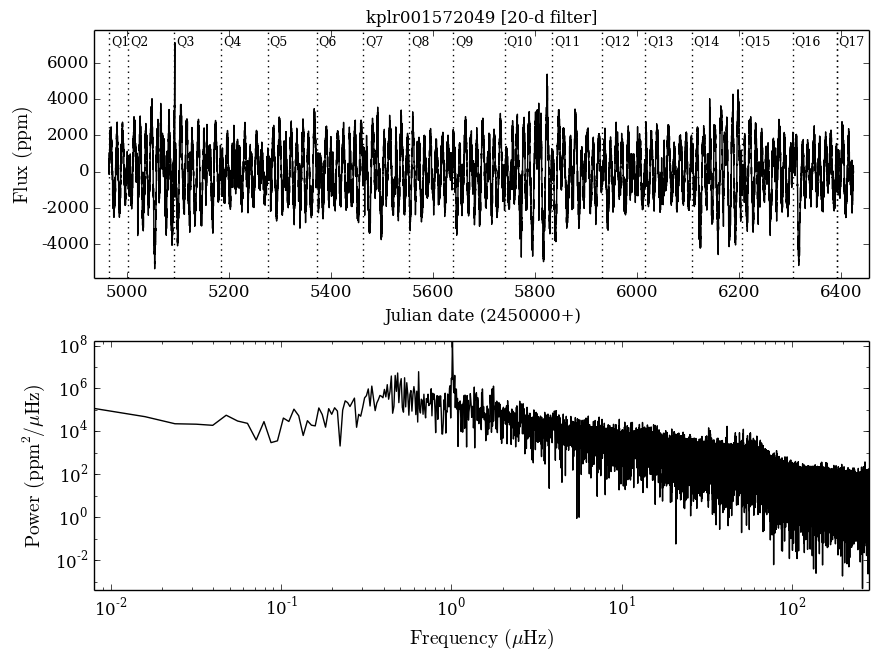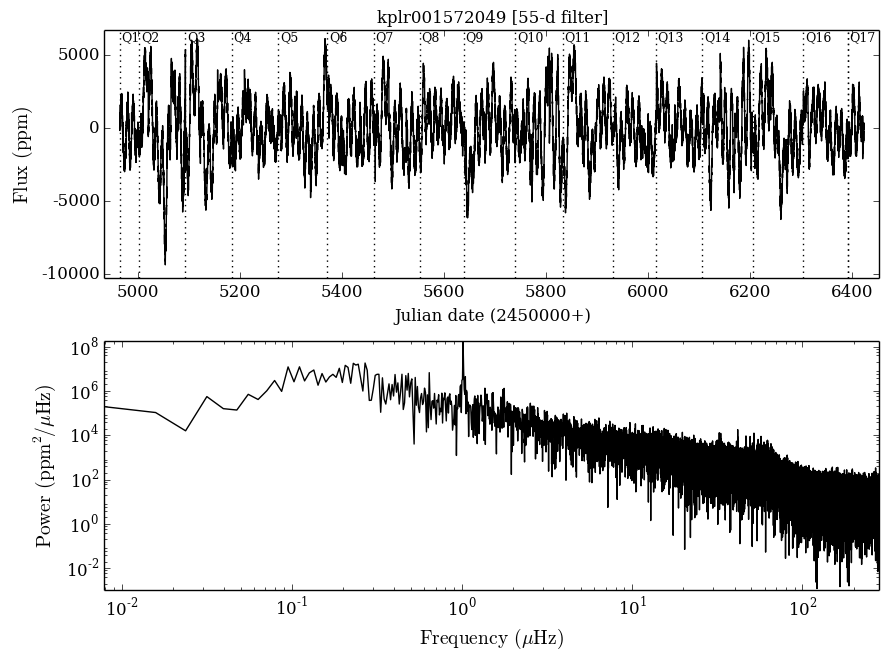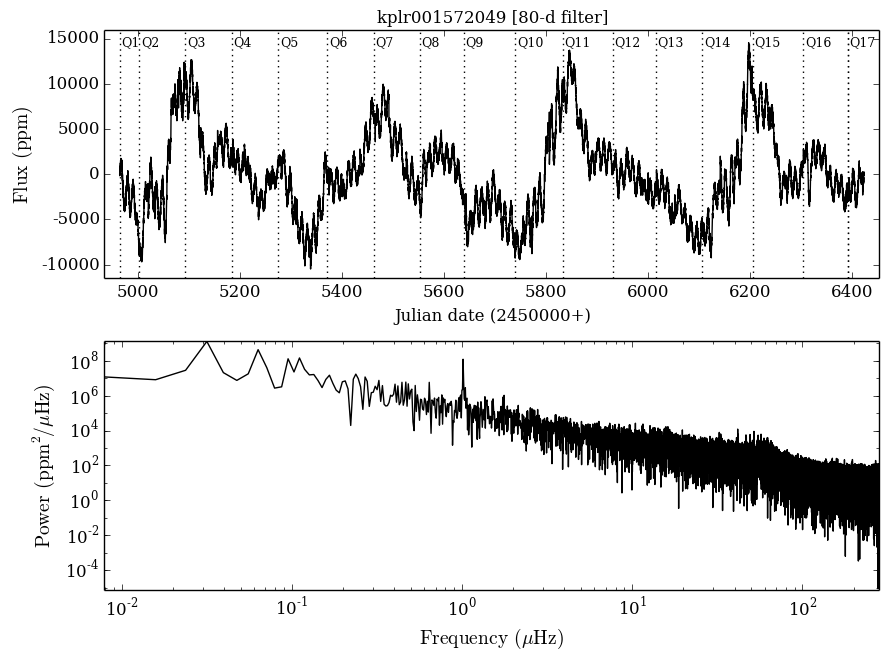|
|||||||||||||||||||
|
|
|||||||||||||||||||
Kepler Light Curves Optimized For Asteroseismology (KEPSEISMIC)
HLSP Authors: Savita Mathur, Ângela Santos, Rafael A. García
García et al., 2011, MNRAS, 414, L6 | García et al., 2014, A&A, 568, 10 | Pires et al., 2015, A&A, 574, 18
Introduction |
Description of Data Products |
Data Access |
Download README |
Introduction



KEPSEISMIC light curves are obtained from Kepler pixel-data files using large custom apertures that produce more stable light curves on longer time scales for seismic studies. For each pixel in the pixel-data file, a reference weighted flux value is computed as the 99.9th percentile of the flux divided by its error representing a measure of the signal-to-noise ratio. Starting from the center of the point-spread function of the target star pixels, new pixels are added in one direction of the mask if two conditions are fulfilled: i) the reference weighted flux of the pixel is higher than a threshold of 100; ii) the weighted flux is smaller than the value of the previous pixel within a small tolerance. In most cases, this second condition allows the team to remove the pixels corresponding to a second star present in the aperture.
The resultant light curve is processed through the implementation of the Kepler Asteroseismic Data Analysis and Calibration Software (KADACS, García et al. 2011). KADACS corrects for outliers, jumps, and drifts, properly concatenates the independent Kepler Quarters in a star-by-star basis. It also fills the gaps shorter than 20 days in long cadence data following in-painting techniques based on a multi-scale cosine transform (García et al. 2014, Pires et al. 2015). The resulting light curves are high-pass filtered at 20, 55 days (quarter by quarter) and 80 days (using the full light curve at once) yielding three different light curves for each target. This ensures the homogeneity of the treatment done to the light curves when a single filter is used (e.g. for studies of the stellar convective background). For light curves longer than one month, KADACS corrects for discontinuities at the edges of the Kepler Quarters. You can refer to the full set of KEPSEISMIC observations using the DOI http://dx.doi.org/10.17909/t9-mrpw-gc07. This work was funded by the NASA grant NNX17AF27G.
Description of Data Products
Each file name follows a syntax of "hlsp_kepseismic_kepler_phot_kplr{kicid}-{filter}_kepler_v1_{exten}", where:
- {kicid} = 9-digit, zero-padded Kepler Input Catalog (KIC) ID.
- {filter} = Width in days of the high-pass filter applied, e.g., "20d".
-
{exten} = File extension, one of:
- {_cor-filt-inp.fits} = light curve corrected by the KADACS software with the gap filling using the inpainting technique.
- {_cor-psd-filt-inp.fits} = power spectrum density of the light curve produced above.
- {_preview.png} = preview of the corrected light curve as a function of time (top panel) and the corresponding power spectrum density as a function of frequency (bottom panel) as shown in the graph on this webpage.
- {mmmm} = The first four digits, zero-padded, of the KIC ID.
- {nnnnn} = The last five digits, zero-padded, of the KIC ID.
- {xx} = The width of the high-pass filter, one of "20", "55", or "80".
Data Access
The KEPSEISMIC light curves and previews are available in the MAST Portal and through MAST Astroquery. They are also listed in the table below, sorted by Kepler IDs.
|
|
|




 Follow Us
Follow Us